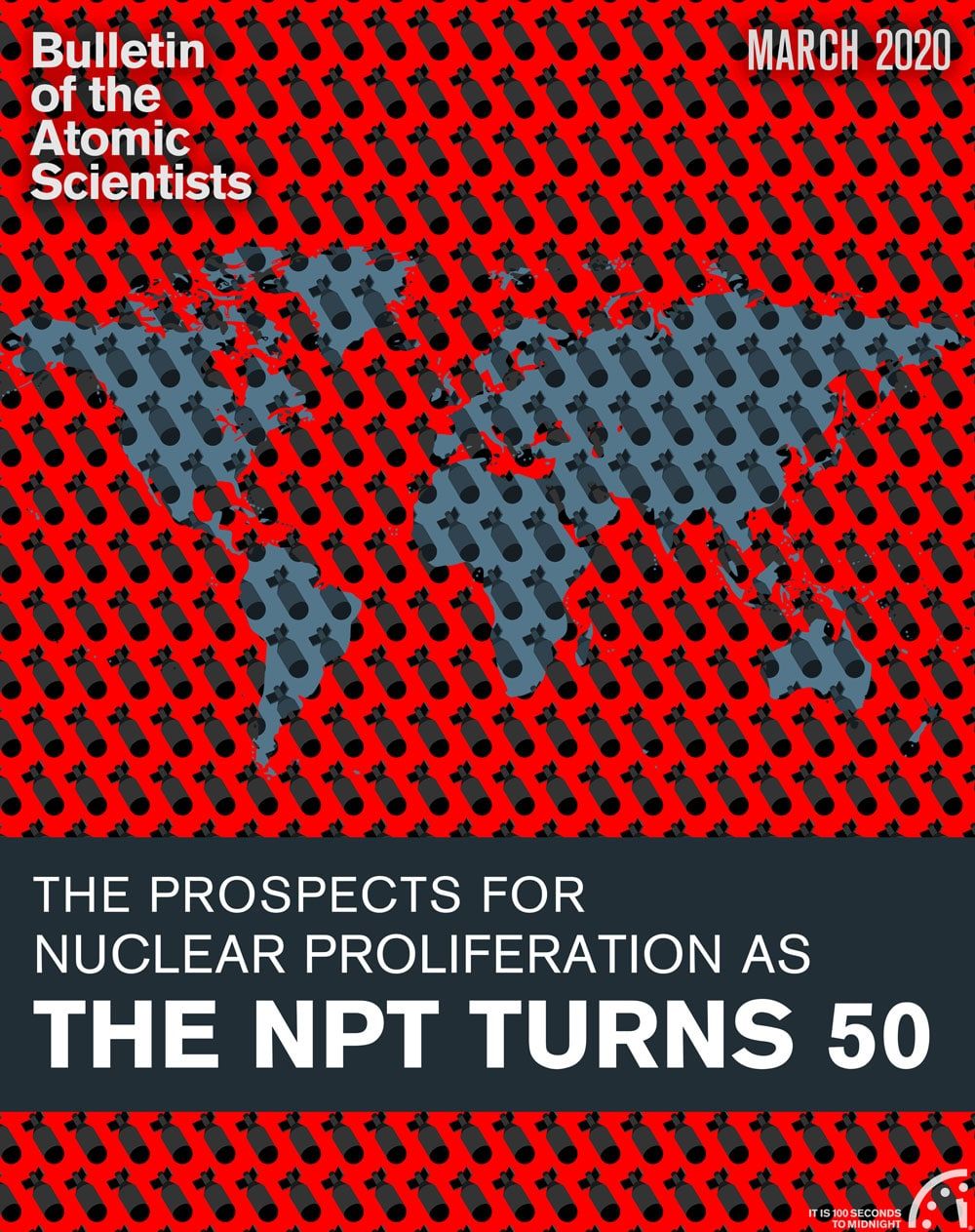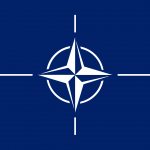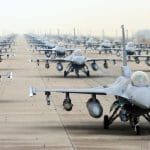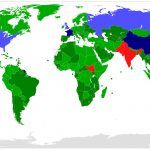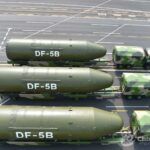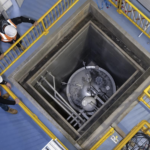Nuclear Notebook: Russian nuclear forces, 2020
By Hans M. Kristensen, Matt Korda | March 1, 2020
Nuclear Notebook: Russian nuclear forces, 2020
By Hans M. Kristensen, Matt Korda | March 1, 2020
Editor’s note: The Nuclear Notebook is researched and written by Hans M. Kristensen, director of the Nuclear Information Project with the Federation of American Scientists, and Matt Korda, a research associate with the project. The Nuclear Notebook column has been published in the Bulletin of the Atomic Scientists since 1987.
To download a free PDF of this article, click here.
To see all previous Nuclear Notebook columns, click here.
Russia is in the middle of a decades-long modernization of its strategic and nonstrategic nuclear forces to replace Soviet-era weapons with newer systems. President Vladimir Putin reported in late-2019 that modern equipment now makes up 82 percent of Russia’s nuclear triad and that “our equipment must be better than the world’s best if we want to come out as the winners.” He further declared that Russia is “ready to work out new arms control agreements. But until this process is launched we will continue to strengthen our nuclear forces.” Moreover, he said, “we will continue to create other promising missile systems” to deter Russia’s potential adversaries (Russian Federation 2019a). These modernizations, combined with an increase in the number and size of military exercises and occasional explicit nuclear threats against other countries, contribute to uncertainty about Russia’s long-term intentions and growing international debate about the nature of its nuclear strategy. These concerns, in turn, stimulate increased defense spending, nuclear modernization programs, and political opposition to further nuclear weapons reductions in Western Europe and the United States.
As of early 2020, we estimate that Russia has a stockpile of roughly 4,520 nuclear warheads assigned for use by long-range strategic launchers and shorter-range tactical nuclear forces. Of these, roughly 1,570 strategic warheads are deployed: approximately 810 on land-based ballistic missiles, 560 on submarine-launched ballistic missiles, and 200 at heavy bomber bases. Another 1,070 strategic warheads are in storage, along with about 1,880 nonstrategic warheads. In addition to the military stockpile for operational forces, a large number—approximately 1,850—of retired but still largely intact warheads await dismantlement, for a total inventory of approximately 6,370 warheads.[1] (See Table 1.)
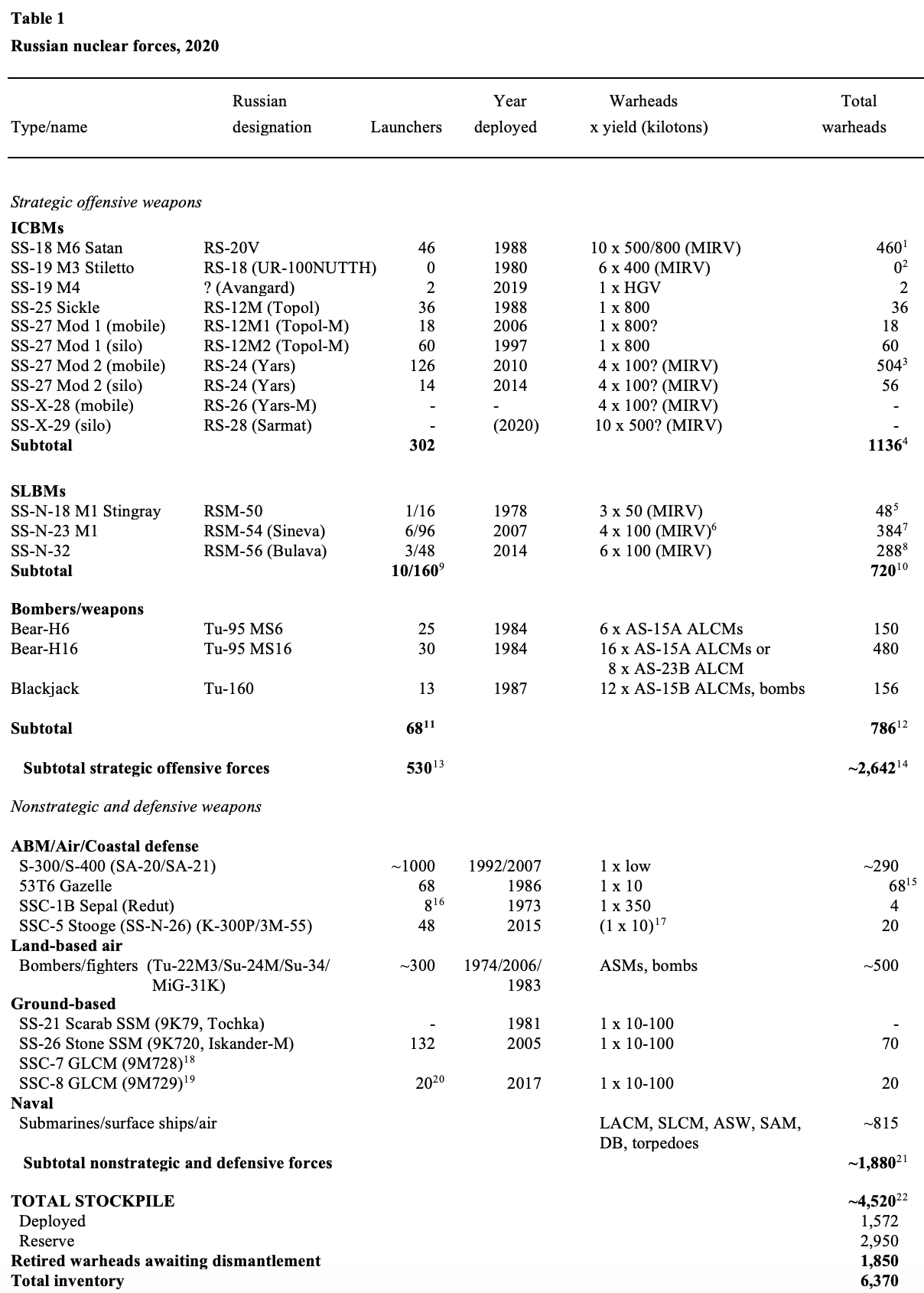
Key: ABM = antiballistic missile; ALCM = air-launched cruise missile; AS = air-to-surface; ASM = air-to-surface missile; ASW = antisubmarine weapon; DB = depth bomb; GLCM= groundlaunched cruise missile; ICBM = intercontinental ballistic missile; LACM = Land-Attack Cruise Missile; MIRV = multiple independently targetable reentry vehicle; SAM = surface-to-air missile; SLBM = submarine-launched ballistic missile; SLCM = sea-launched cruise missile; SRAM = short-range attack missile; SSM = surface-to-surface missile
Click here for Table 1’s full PDF and annotation
Russia has significantly reduced the number of warheads deployed on its ballistic missiles to meet the New START limit of no more than 1,550 deployed strategic warheads. Russia achieved the required reduction by the February 5, 2018 deadline, when it declared 1,444 strategic warheads attributed to 527 launchers (Russian Federation Foreign Affairs Ministry 2018). Since then, these numbers have undergone slight fluctuation: In September 2018, Russia declared 1,420 warheads attributed to 517 launchers (US State Department 2018a), and in March 2019, Russia declared 524 launchers with 1,461 warheads (US State Department 2019a). The most recent data, declared on September 1, 2019, indicated that Russia has reduced those numbers to 1,426 deployed warheads attributed to 513 strategic launchers (US State Department 2019b). These changes represent normal fluctuations in the arsenal due to maintenance and upgrades and do not reflect an increase or decrease of the force structure or threat level. Further, these numbers differ from the estimates presented in this Nuclear Notebook because the New START counting rules artificially attribute one warhead to each deployed bomber, even though Russian bombers do not carry nuclear weapons under normal circumstances, and because this Nuclear Notebook counts weapons stored at bomber bases that can quickly be loaded onto the aircraft.
If New START were allowed to expire, Russia (like the United States) could upload several hundreds of extra warheads onto their launchers, which means that the treaty has proven useful in keeping a lid on both countries’ deployed warheads. Additionally, if New START expired, then both countries would lose a critical node of transparency into each other’s nuclear forces: As of late-2019, the United States and Russia have completed a combined 321 on-site inspections and exchanged 19,261 notifications (US State Department 2019c).
Due to New START limitations, Russia appears to have been forced to reduce the warhead loading on some of its missiles to less than maximum capacity. We do not know the breakdown of the loading because Russia, unlike the United States, does not publish an unclassified overview of its strategic forces. However, the most recent reduction may have involved scaling back the number of warheads on each SS-18 and SS-27 Mod 2 intercontinental ballistic missile (ICBM), as well as on each SS-N-32 submarine-launched ballistic missile (SLBM). This indicates that New START places real constraints on Russia’s deployed strategic forces. The result appears to be an increased reliance on a strategic reserve of non-deployed warheads that can be loaded onto missiles in a crisis to increase the size of the force—a strategy similar to the one the United States has relied on for several decades.
Overall, Russia’s nuclear modernization effort will present the international arms control community with new challenges. Unless a new arms reduction agreement is reached in the near future, the shrinking of Russia’s strategic nuclear arsenal that has characterized the past two decades will likely come to an end, with the force leveling out at around 530 launchers with roughly 2,500 assigned warheads. However, Russia’s financial crisis represents a significant challenge to maintaining this force level, as exemplified by delays in production of several major weapon systems such as the Sarmat ICBM (SS-29) and the RS-26 Rubezh, the cancellation of the once highly-touted Barguzin rail-based ICBM, and less expansive upgrades to many of the road-mobile ICBM garrisons.
Russia’s nuclear modernization program is motivated in part by Moscow’s strong desire to maintain overall parity with the United States, but also by the Russian leadership’s apparent conviction that the US ballistic missile defense system constitutes a real future risk to the credibility of Russia’s retaliatory capability. Policy and strategy aside, the development of multiple weapon systems also indicates the strong influence of the military-industrial complex on Russia’s nuclear posture planning.
What is Russia’s nuclear strategy?
The international debate about Russia’s nuclear strategy has reached a new level of intensity, particularly after the Trump administration published its Nuclear Posture Review in February 2018. The Nuclear Posture Review claims that “Russian strategy and doctrine emphasize the potential coercive and military uses of nuclear weapons. It mistakenly assesses that the threat of nuclear escalation or actual first use of nuclear weapons would serve to ‘de-escalate’ a conflict on terms favorable to Russia” (US Defense Department 2018, 8). Specifically, the document claims, “Moscow threatens and exercises limited nuclear first use, suggesting a mistaken expectation that coercive nuclear threats or limited first use could paralyze the United States and NATO and thereby end a conflict on terms favorable to Russia.” This so-called “escalate to de-escalate” doctrine “follows from Moscow’s mistaken assumption of Western capitulation on terms favorable to Moscow” (US Defense Department 2018, 30).
The head of the US Strategic Command, Gen. John Hyten, has reacted to “Russia’s destabilizing doctrine on what some call escalate to deescalate” by saying: “I really hate that discussion. I’ve looked at the Russian doctrine. I’ve looked at Russian writings. It’s not escalate to deescalate, it’s escalate to win. Everybody needs to understand that” (Hyten 2017). Some have suggested that Russian leaders are signaling a willingness to use nuclear weapons even before an adversary retaliates against a Russian conventional attack by “employing the threat of selective and limited use of nuclear weapons to forestall opposition to potential aggression” (emphasis added) (Miller 2015). The implication is that Russia would potentially use nuclear weapons first to scare an adversary into not even defending itself.
Such characterizations conflict with Russia’s publicly stated policy. In his remarks to the Valdai Club in October 2018, President Putin said, “Our nuclear weapons doctrine does not provide for a pre-emptive strike.” Rather, he went on, “our concept is based on a reciprocal counter strike…. This means that we are prepared and will use nuclear weapons only when we know for certain that some potential aggressor is attacking Russia, our territory” (Russian Federation 2018). This is consistent with Russia’s official military strategy, published in December 2014, which says that Russia “shall reserve for itself the right to employ nuclear weapons in response to the use against it and/or its allies of nuclear and other kinds of weapons of mass destruction, as well as in the case of aggression against the Russian Federation with use of conventional weapons when the state’s very existence has been threatened” (Russian Federation 2014). This formulation is almost identical to the country’s previous version of military strategy published in 2010 (Russian Federation 2010). Although some initial reports interpreted Putin’s 2018 Valdai Club comments to mean that Russia might be adopting a nuclear no-first-use policy, this does not seem to be the case; his remarks were more likely meant to respond to the US Nuclear Posture Review’s claim that Russia has lowered its threshold for first use of nuclear weapons in a conflict (Stowe-Thurston, Korda, and Kristensen 2018). Because Putin’s comments imply that Russia would only use nuclear weapons in retaliation against an existential threat, independent analysts have challenged the Nuclear Posture Review’s characterization of the Russian strategy as overblown and a misreading of Russia’s nuclear doctrine.[2]
Whatever Russia’s nuclear strategy is, Moscow seems to be administering it more dynamically and offensively than it did a decade ago. Russian officials have made many statements about nuclear weapons that appear to go beyond the published doctrine, threatening to potentially use them in situations that do not meet the conditions described. For example, officials explicitly threatened to use nuclear weapons against ballistic missile defense facilities, and in regional scenarios that do not threaten Russia’s survival or involve attacks with weapons of mass destruction (The Local 2015).
Moreover, the fact that Russian military planners are pursuing a broad range of existing and new versions of nuclear weapons suggests that the real doctrine goes beyond basic deterrence and toward regional war-fighting strategies, or even weapons aimed at causing terror. One widely-cited example involves the so-called Status-6—known in Russia as “Poseidon” and in the United States as “Kanyon”—a long-range nuclear-powered torpedo that a Russian government document blatantly described as intended to create “areas of wide radioactive contamination that would be unsuitable for military, economic, or other activity for long periods of time” (Podvig 2015). A diagram and description of the proposed weapon, first revealed in a Russian television broadcast, can still be seen on YouTube (YouTube 2015). The weapon, which is under development, appears designed to attack harbors and cities and would cause widespread indiscriminate collateral damage in violation of international law.
Intercontinental ballistic missiles
Based on what we can observe via satellite images, combined with information published under New START by various US government sources, Russia appears to have approximately 302 deployed ICBMs, which we estimate can carry approximately 1,136 warheads. (See Table 2.) The size of the force that we can observe, however, is difficult to square with statements made by Russian officials. Since 2016, and again most recently in December 2019, the commander of the country’s Strategic Rocket Forces, Col. Gen. Sergey Karakaev, has stated that Russia had approximately 400 ICBMs on combat duty (TASS 2016, Andreyev and Zotov 2017, Karakaev 2019). But since Russia had 513 deployed strategic launchers in total as of September 2019, a force of 400 ICBMs would mean Russia only deployed 113 SLBMs and bombers, which seems unlikely (Russian Federation Foreign Affairs Ministry 2018). It is possible Karakaev is referring to all ICBMs in the inventory, not just those that are deployed. In June 2019, Karakaev noted that over 30 new ICBMs would be commissioned into the Strategic Rocket Forces by the end of the year (Interfax 2019a). In December 2019, Karakaev reported that five missile regiments had been upgraded during the past year (Interfax 2019c). Modernization of the ICBM force also involves equipping upgraded silos with new air-defense systems, and the new Peresvet laser has been deployed with five road-mobile ICBM divisions for the purpose of “covering up their maneuvering operations” (Russian Federation Defense Ministry 2019a).
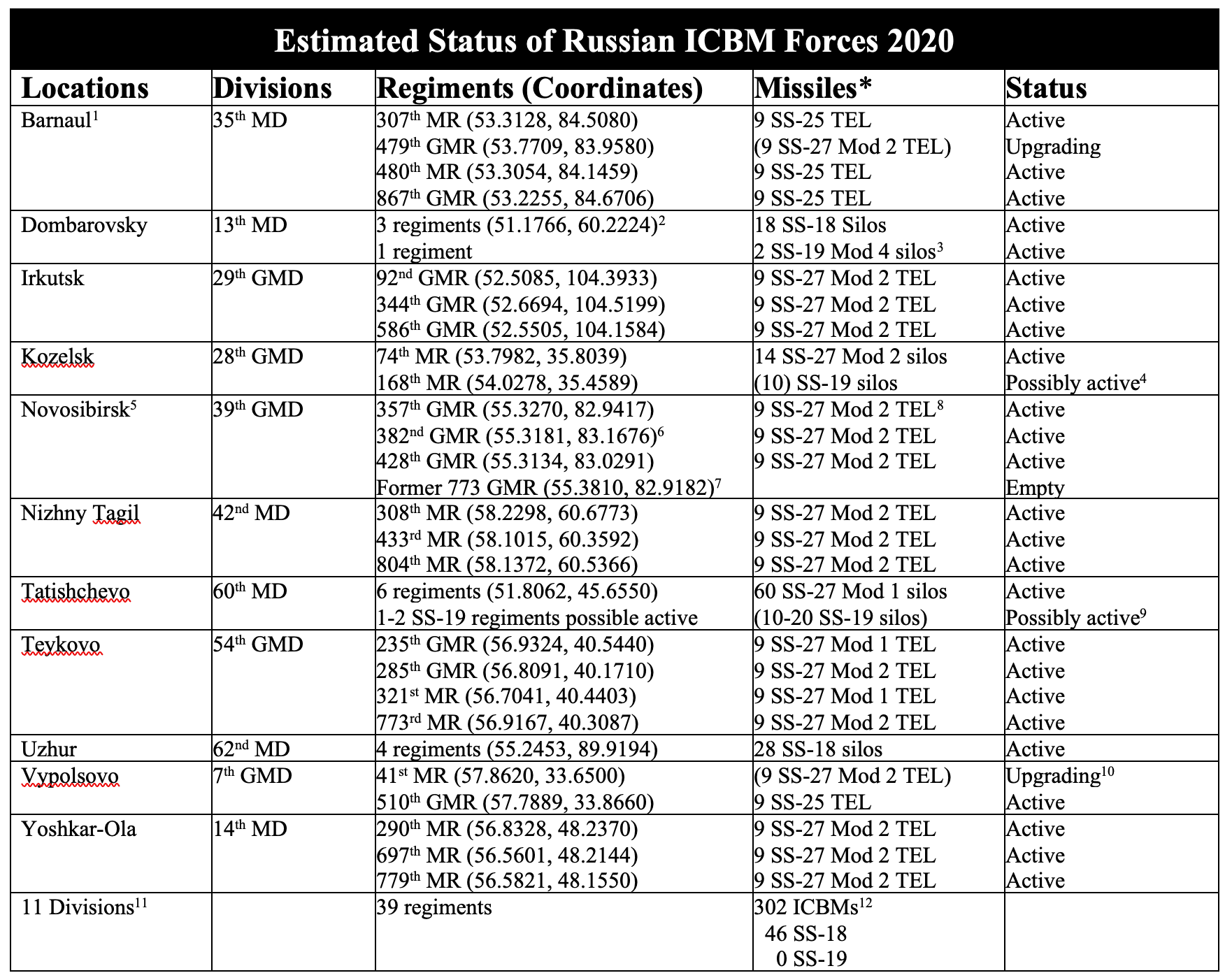
Click here for Table 2’s full PDF and annotation
The ICBMs are organized under the Strategic Rocket Forces in three missile armies with a total of 11 divisions consisting of approximately 39 missile regiments (see Table 2). The 40th regiment in the 12th division at Yurya is not nuclear-armed. The ICBM force has been declining in number for three decades, and Russia claims to be 76 percent of the way through a modernization program to replace all Soviet-era missiles with newer types by the early 2020s on a less-than-one-for-one basis (Russian Federation 2019a). Currently, the remaining Soviet-era ICBMs include the SS-18, the SS-19, and the SS-25.
The SS-18 (RS-20V or R-36M2 Voevoda) is a silo-based, 10-warhead heavy ICBM first deployed in 1988. It is reaching the end of its service life, with approximately 46 SS-18s with up to 460 warheads remaining in the 13th Missile Division at Dombarovsky and the 62nd Missile Division at Uzhur. We estimate the number of warheads on each SS-18 has been reduced for Russia to meet the New START treaty limit for deployed strategic warheads. The SS-18 is scheduled to begin retiring in the early 2020s, when the SS-29 (Sarmat or RS-28) ICBM will begin to replace it.
The silo-based, six-warhead SS-19 (RS-18 or UR-100NUTTH) entered service in 1980 and might finally have been retired and replaced by the silo-based SS-27 Mod 2 (RS-24). It is possible that the SS-19 has been retired from combat duty, but two regiments that used to be armed with the missile still show significant activity. A small number of converted SS-19s are being deployed with two regiments of the 13th Missile Division at Dombarovsky as the SS-19 Mod 4 with the new Avangard hypersonic glide vehicles (see below).
Russia continues to retire its SS-25 (RS-12M or Topol) road-mobile missiles at a rate of one or two regiments (nine to 18 missiles) each year, replacing them with the SS-27 Mod 2 (RS-24). There remains some uncertainty about how many SS-25s are fully operational. Base upgrades used to involve significant rebuilding, but satellite images indicate that Russia has started to upgrade the bases by simply replacing the SS-25s with the new SS-27 launchers and their service vehicles, which are maintained under camouflage nets. We estimate that as few as 36 SS-25s remain in the active force.
The new ICBMs include two versions of the SS-27: the Mods 1 and 2. We estimate that these two versions now carry more warheads than all the remaining SS-18s. The SS-27 Mod 1 is a single-warhead missile, known in Russia as Topol-M, that comes in either mobile (RS-12M1) or silo-based (RS-12M2) variants. Deployment of the SS-27 Mod 1 was completed in 2012 with a total of 78 missiles: 60 silo-based missiles with the 60th Missile Division in Tatishchevo, and 18 road-mobile missiles with the 54th Guards Missile Division at Teykovo. Russian officials indicated in 2019 that the Topol-M units eventually will be upgraded to RS-24 Yars as well.
The focus of the current and bigger phase of Russia’s modernization is the SS-27 Mod 2, known in Russia as the RS-24 (Yars), which is a modified SS-27 Mod 1 (or Topol-M) that can carry up to four multiple independently targetable reentry vehicles (MIRVs). First deployed in 2010, we estimate that Russia now deploys 140 Yars (mobile as well as silo). Following initial deployment from 2010 to 2012 of the first 18 missiles in two regiments with the 54th Guards Missile Division at Teykovo, SS-27 Mod 2 upgrades now appear to be complete at the 39th Guards Missile Division at Novosibirsk, the 42nd Missile Division at Nizhny Tagil, the 29th Guards Missile Division at Irkutsk, and the 14th Missile Division at Yoshkar-Ola.
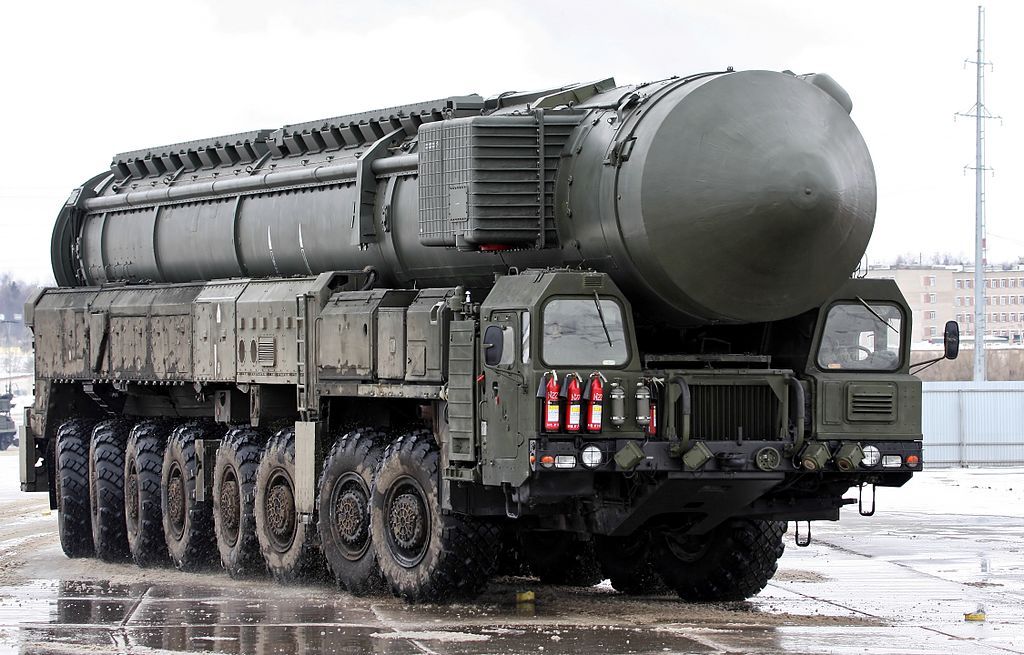
The next mobile ICBM divisions to be upgraded are the 35th Missile Division at Barnaul and the 7th Missile Division at Vypolsovo. The first brigade at Barnau (the 479th Missile Regiment) went on preliminary combat alert duty with the Yars in September 2019 and full combat duty in November 2019. The next three brigades are scheduled to follow over the next several years (TASS 2019b). The Vypolsovo division started early preparations for the upgrade in 2019 (Tikhonov 2019), and it is possible that one of its two brigades has already stood down its SS-25 launchers.
Finally, installation of the silo-based version of the SS-27 Mod 2 is well underway at the 28th Guards Missile Division at Kozelsk. The first regiment (the 74th Missile Regiment) officially began combat duty with its full complement of 10 missiles in November 2018, after initially being declared operational (likely with just six missiles) in 2015 (Russian Federation Defense Ministry 2018b). Satellite pictures show that upgrades are well underway at all the silos of a second regiment (the 168th Missile Regiment), with missiles thought have been installed in four of the silos. Apart from the missile itself, the upgrade involves extensive modification of external fences, internal roads, and facilities. Each site is also receiving a new fixed air-defense system, probably to defend the silo against cruise missiles and drones.
The Russian Defense Ministry says the completion of all preparatory infrastructure for Yars bases across the country is scheduled for completion by 2021 (TASS 2019b), although full completion is likely to take longer than that.
Final development and deployment of a compact SS-27 version, known as Rubezh (Yars-M or RS-26), appears to have been delayed at least until the next armament program in the late-2020s (TASS 2018a). A rail-based version known as Barguzin appears to have been canceled.
Russia is also developing the heavy SS-29, or Sarmat (RS-28), which will begin replacing the SS-18 (RS-20V) in 2021. Three ejection tests were conducted in December 2017, March 2018, and May 2018 at the Plesetsk Space Center, involving cold launch and test firing of the Sarmat’s first stage and booster engine. These tests were originally scheduled for 2016 but were delayed because of difficulties that appeared during the missile’s strength tests. Further tests involving the firing of the second- and third-stage engines are currently underway, according to Roscosmos director general Dimitry Rogozin, and should have been completed by the end of 2019 (TASS 2019a). The closing test stages, which will include a test launch with the 62nd Missile Division at Uzhur, will be completed by the end of 2020, following which the Sarmat will officially be handed over to the military. Serial production is expected to begin in 2021 (Safronov and Nikolsky 2019).
There are many rumors about the SS-29, which some in the media have dubbed the “Son of Satan” because it is a follow-on to the SS-18, which the United States and NATO designated “Satan”—presumably to reflect its extraordinary destructive capability. Rumors that the SS-29 could carry 15 or more MIRV warheads, though, seem exaggerated. We expect that it will carry about the same number as the SS-18 plus penetration aids. It is possible that a small number will be equipped to carry the Avangard hypersonic glide vehicle, which are currently being installed on a limited number of SS-19 Mod 4 boosters at Dombarovsky. If the SS-29 replaces all current SS-18s, it will be installed in a total of 46 silos of the three regiments at the Dombarovsky missile field and four regiments at the Uzhur missile field. The first two SS-29s might be deployed to Uzhur in 2021 and the next four will be delivered in 2022 (Gady 2019a).
The new Avangard hypersonic glide vehicle is designed to evade missile defenses and is initially being fitted atop modified SS-19 missiles (SS-19 Mod 4) at Dombarovsky and possibly later on SS-29 missiles at Uzhur. The two missiles at Dombarovsky began combat duty on December 27th, 2019, and the regiment will eventually receive a full complement of six missiles (TASS 2019k). A second regiment of six missiles will reportedly be added by the end of 2027, to coincide with the completion of the current state armament program (TASS 2018b). According to Karakaev, the requisite infrastructure to support the incoming Avangard deployment is currently being completed (Mosalov 2019). This explains why the two sites that were first loaded at the 621st Missile Regiment still appear to be upgrading with new and different security perimeters, in addition to new buildings for crew and guards. Two more silos are also being upgraded, presumably for the next two Avangard missiles. Similar to the new silos at Kozelsk, the modified Dombarovsky silos appear to have some form of missile defense system.
While the 2018 Nuclear Posture Review anticipated that Russian missile forces will increase over time, that will not necessarily be the case. The US National Air and Space Intelligence Center predicted in 2017 that “the number of missiles in the Russian ICBM force will continue to decrease because of arms control agreements, aging missiles, and resource constraints” (US Air Force 2017, 26). So, unless New START is jeopardized, that trend will likely continue, although the force level will likely level out as the modernization program is completed. The treaty is due to expire in 2021 but can be extended for five years with approval by the Russian and US presidents.
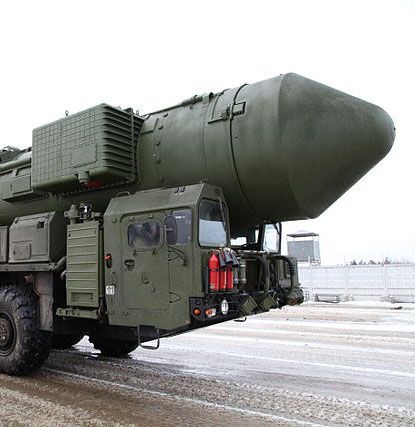
After previous uncertainty about whether Russia’s new strategic systems would fit into the counting rules under New START, the deputy director of the Russian Foreign Ministry’s nonproliferation and arms control department stated in November 2019 that both Sarmat and Avangard could be “easily included” in the treaty. Regarding Sarmat, he said that it would enter the treaty “as a new type of ICBM, for which there is a special procedure, from the creation of a prototype to its authorization for service.” He further noted that Avangard “will enter the treaty very smoothly” because “it is an optional warhead for an ICBM of the corresponding type, to which the treaty applies, too” (TASS 2019j). Putin declared in December that Russia was prepared to extend New START immediately, “without any preconditions” (Russian Federation 2019b).
Roscosmos director general Dimitry Rogozin suggested in July 2019 that going forward all retired Russian missiles should be “salvaged by launch,” meaning that they would be recycled for civilian purposes like space launches or asteroid deflection. This concept has already seen success with the Dnepr space launch vehicle, which was based on the retiring SS-18, but could soon be scaled up to include other types of retiring ICBMs like the SS-19s and SS-25s (Sputnik 2019).
Between 2019 and 2021, the Strategic Rocket Force is expected to conduct nine ICBM test launches: two Sarmats, three Yars, and four Topols (Pravda 2019). For example, in July 2019, the Strategic Rocket Force test-launched a Topol ICBM from Kapustin Yar to the Sary-Shagan test site in Kazakhstan. However, given that Kazakhstan ratified the Treaty on the Prohibition of Nuclear Weapons in August 2019, it is unclear whether the country will continue to allow Russia to use its test site at Sary-Shagan for its ICBM launches once the treaty enters into force. Article 4(2) of the treaty notes that each state party must ensure “the elimination or irreversible conversion of all nuclear-weapons-related facilities.” This would necessarily include Sary-Shagan, which is clearly connected to Russia’s nuclear weapons complex (United Nations 2017). This means that upon entry into force, Kazakhstan will face a tough decision over whether to fully comply with the treaty and risk souring relations with Russia, or whether to dilute its compliance.
Russia is also developing a nuclear-powered, nuclear-armed cruise missile, known as 9M730 Burevestnik (NATO’s designation is SSC-X-9 Skyfall). This missile has faced serious setbacks: according to US military intelligence, it has failed nearly a dozen times since its testing period began in June 2016 (Panda 2019a). In November 2017, a failed test resulted in the missile being lost at sea, which required a substantial recovery effort (Macias 2018). A similar recovery effort in August 2019 resulted in an explosion that killed five scientists and two soldiers at Nenoksa; the explosion’s connection to Skyfall was confirmed by US State Department officials in October 2019 (DiNanno 2019).
Submarines and submarine-launched ballistic missiles
The Russian Navy operates 10 nuclear-powered ballistic missile submarines (SSBNs) of three classes: six Delta IV (Project 667BRDM), one Delta III (Project 667BRD), and three Borei (Project 955).[3] Each submarine can carry 16 SLBMs, and each SLBM can carry several MIRVs, for a combined maximum loading of approximately 720 warheads. Only some of these submarines are operational, and the warhead loading on some of the missiles may have been reduced as part of New START implementation, however, so the total number of warheads carried is lower, possibly around 560.
Until the mid-2020s, the mainstay of Russia’s nuclear submarine force will continue to be the six third-generation Delta IVs built between 1985 and 1992, each equipped with 16 SLBMs. All Delta IVs are part of the Northern Fleet and based at Yagelnaya Bay (Gadzhiyevo) on the Kola Peninsula. Russia has upgraded the Delta IVs to carry modified SS-N-23 SLBMs, known as Sinevas, each of which carries up to four warheads. A modified Sineva, known as Layner (or Liner), may carry a modified payload. Normally four to five of the six Delta IVs are operational at any given time, with the other one or two in various stages of maintenance.
Two Delta III nuclear submarines (K-223 Podolsk and K-433 Svyatoy Georgiy Pobedonosets) were reportedly decommissioned in early 2018, leaving one Delta III—Ryazan (K-44)—operational with Russia’s Pacific Fleet on the Kamchatka Peninsula (Podvig 2018b). The decommissioned subs are still visible in satellite images. The Delta III is equipped with 16 SS-N-18 M1 Stingray (RSM-50) SLBMs with three warheads each.
The Delta IIIs and Delta IVs will eventually be replaced by the new class of Borei (Project 955/A) SSBNs. Each boat is armed with 16 SS-N-32 (Bulava) SLBMs that can carry up to six warheads each. It is possible that the missile payload has been lowered to four warheads each to meet the New START treaty limit on deployed strategic warheads. In May 2018, one of the new boats, Yuri Dolgoruki (K-535), salvo-fired four Bulavas as part of a test launch (Russian Federation Defense Ministry 2018a). Three boats are currently in service, with another five in various stages of construction, and two more to be purchased, for a total of 10 Borei SSBNs. The first boat, Yuri Dolgoruki, is based at Yagelnaya in the Northern Fleet. The second boat, Alexander Nevsky (K-550), arrived at its home base at Rybachiy near Petropavlovsk in September 2015, where it was joined by the third Borei, Vladimir Monomakh (K-551), in September 2016.
The first of the improved Borei-A/II (Project 955A) SSBNs, and the fourth Borei submarine in total, Knyaz Vladimir (K-549), has faced delays but recently began sea trials after leaving dry dock in November 2017 (Podvig 2018a). Despite previous rumors that the improved Borei class would have 20 missile tubes, satellite images taken of the first unit in 2018 showed only 16 tubes (Kristensen 2018). In October 2019, the Knyaz Vladimir successfully completed a long-awaited test-launch of the Bulava SLBM from a submerged position in the White Sea, a significant milestone during its second round of sea trials (Gady 2019b). The new boat was scheduled to join the Northern Fleet in December 2019 (TASS 2019c); however, delivery has been delayed until the first quarter of 2020 due to “certain shortcomings” discovered during sea trials (TASS 2019l). The fifth boat under construction—Knyaz Oleg—underwent hull pressure tests in November 2016 and was originally scheduled for delivery in 2018 but will be delayed until 2020. The keel of the sixth boat—Generalissimus Suvorov—was laid down in December 2014 for possible completion in 2018 but will also be delayed. The keel for the seventh boat— Emperor Alexander III—was laid down in December 2015 for scheduled delivery in 2019 but has also been delayed. The keel for the eighth Borei SSBN—Knyaz Pozharsky—was laid in December 2016 for potential delivery between 2021 and 2023 (Russian Federation Defense Ministry 2016). Russia has decided to build two more Borei-As, the first keel scheduled to be laid on May 9, 2020, for expected delivery in 2026 and 2027, respectively, bringing the total fleet up to ten boats (RIA Novosti 2019b). Eventually, five SSBNs will be assigned to the Northern Fleet, and five will be assigned to the Pacific (TASS 2018c).
In October 2019, Russia conducted its annual nuclear force readiness exercise, named “Grom” (Thunder). During the exercise, the Russian Navy experienced notable setbacks. The Delta-III class Ryazan SSBN only fired one of its two planned Sineva SLBMs from a submerged position, due to unexpected information regarding the “technical condition of the missile,” according to the Russian Defense Ministry (Interfax 2019b). Additionally, launches of 3M-54 Kalibr missiles during the exercise reportedly did not proceed as planned, and required the use of backup launch systems in order to fire (Sidorkova and Kanaev 2019). Conspicuously absent from the exercise were the newer Borei-class SSBNs, although a few months earlier, in August 2019, Yuri Dolgoruki test-fired a Bulava as part of a combat training exercise in the Barents Sea (Devitt 2019).
The Russian Navy is also developing the Status-6 Poseidon mentioned above—a nuclear-powered, very long range, nuclear-armed torpedo. Underwater trials began in December 2018. The weapon is scheduled for delivery in 2027 and will be carried by specially configured Oscar submarines (TASS 2018g). The first of these special submarines––the Project 09852 K-329 Belgorod––was launched in April 2019 and is scheduled for delivery to the navy by the end of 2020 after undergoing sea trials. The Belgorod will become Russia’s largest submarine and can reportedly carry six Poseidon torpedoes (TASS 2019g).
Strategic bombers
Russia operates two types of nuclear-capable heavy bombers: the Tu-160 Blackjack and the Tu-95MS Bear H. We estimate that there are 60 to 70 bombers in the inventory, of which perhaps only 50 are counted as deployed under New START. Both bomber types can carry the nuclear AS-15 Kent (Kh-55) air-launched cruise missile and upgraded versions are being equipped to carry the new AS-23B (Kh-102) cruise missile. Two versions of the Tu-95 are thought to exist: Tu-95H6, which can carry up to six missiles internally, and Tu-95H16, which was built to carry missiles both internally and on wing-mounted pylons for a total of 16 missiles. The Tu-95 modernization program is equipping the Tu-95s to carry eight AS-23B missiles externally. The Tu-160s are also being modernized to carry the AS-23B internally.
It is unclear how many nuclear weapons are assigned to the heavy bombers. Each Tu-160 can carry up to 40,000 kilograms of ordnance, including 12 nuclear AS-15B air-launched cruise missiles. The Tu-95MS can carry six to 16 cruise missiles, depending on configuration. Combined, the 50 deployed nuclear bombers could potentially carry more than 700 cruise missiles. The Tu-160 may also have a secondary mission with nuclear gravity bombs, but it seems unlikely that the old and slow Tu-95 would stand much of a chance against modern air defense systems.[4] Most of the nuclear weapons assigned to the bombers are thought to be in central storage, with only a couple hundred deployed at the two bomber bases.[5] Modernization of the nuclear weapons storage bunker at Engels Air Base is well underway.
Nearly all of the aging Tu-160s and most of the Tu-95MSs are undergoing various upgrades. The first seven upgraded Tu-160s and Tu-95MSs returned to service in 2014, another nine followed in 2016, and five more were added in 2018. Only a few dozen of the Tu-95MSs—perhaps around 44—will be modernized, while at least 10 Tu-160s were slated to be modernized by 2019, although there has been some production delay. The upgrade program adds new weapons including the conventional cruise missile Kh-101 (AS-23A) and the nuclear cruise missile Kh-102 (AS-23B). The AS-23B will likely replace the AS-15. The future bomber force will likely include 50 to 60 aircraft.
Russia is also planning to field an upgraded, stealthier version of the Tu-160, known as Tu-160M2. The Russian Aerospace Force (VKS) has reportedly ordered 50 of the new version; however, since there are currently only 15 or 16 Tu-160s in the inventory, of which only about 13 are fully operational, Russia will have to build completely new airframes to accommodate the modernization program (Johnson 2018). The Russian minister of defense stated in January 2019 that the first Tu-160M2 would be turned over to the military in 2021 (Russian Federation Defense Ministry 2019b). Serial production is expected to begin in 2023 at a rate of three aircraft per year, and the first ten Tu-160M2s are expected to be delivered before 2027 (Zudin 2018). It is possible that the eventual target of 50 new Tu-160M2 bombers might be exaggerated, but if it is accurate, it would probably result in the retirement of most, if not all, of the remaining Tu-95MSs, which are expected to be retired no later than 2035.
The Tu-160M2, meanwhile, is only a temporary bridge to the next-generation bomber known as PAK-DA, the development of which has been underway for several years. The Russian government signed a contract with manufacturer Tupolev in 2013 to construct the PAK-DA at the Kazan factory. Research and development work on the PAK-DA is reportedly nearing completion, and the first prototype is expected in 2021 or 2022, with the first flight in 2025 or 2026, followed by serial production in beginning in 2028 or 2029 (TASS 2019d). However, it seems unlikely that the Russian aviation industry has enough capacity to develop and produce two strategic bombers at the same time.
Nonstrategic nuclear weapons
Russia is updating many of its shorter-range, so-called nonstrategic nuclear weapons, and introducing new types. This effort is less clear and comprehensive than the strategic forces modernization plan, but also involves phasing out Soviet-era weapons and replacing them with newer but fewer arms. New systems are being added, leading the Trump administration’s Nuclear Posture Review to accuse Russia of “increasing the total number of [nonstrategic nuclear] weapons in its arsenal, while significantly improving its delivery capabilities” (US Defense Department 2018, 9). In the longer term, though, the emergence of more advanced conventional weapons could potentially result in reduction or retirement of some existing nonstrategic weapons.
Nonetheless, the Russian military continues to attribute importance to nonstrategic nuclear weapons for use by naval, tactical air, and air- and missile-defense forces, as well as on short-range ballistic missiles. Part of the rationale is that nonstrategic nuclear weapons are needed to offset the superior conventional forces of NATO and particularly the United States. Russia also appears to be motivated by a desire to counter China’s large and increasingly capable conventional forces in the Far East, and by the fact that having a sizable inventory of nonstrategic nuclear weapons helps Moscow keep overall nuclear parity with the combined nuclear forces of the United States, the United Kingdom, and France.
After the 2018 Nuclear Posture Review was published, inaccurate and exaggerated information was distributed in Washington by defense sources that attributed nuclear capability to several Russian systems that had either been retired or were not, in fact, nuclear. Moreover, although the Nuclear Posture Review claims Russia has increased its nonstrategic nuclear weapons over the past decade, the inventory has in fact declined significantly—by about one-third—during that period (Kristensen 2019).
We estimate that Russia today has approximately 1,880 nonstrategic nuclear warheads assigned for delivery by air, naval, ground, and various defensive forces.[6] It is possible that there are more nuclear-capable systems and that this inventory is growing. This estimate, and the categories of Russian weapons that we have been describing in the Nuclear Notebook for years, were confirmed by the Nuclear Posture Review, which said:
Russia is modernizing an active stockpile of up to 2,000 nonstrategic nuclear weapons, including those employable by ships, planes, and ground forces. These include air-to-surface missiles, short range ballistic missiles, gravity bombs, and depth charges for medium-range bombers, tactical bombers, and naval aviation, as well as anti-ship, anti-submarine, and anti-aircraft missiles and torpedoes for surface ships and submarines, a nuclear ground-launched cruise missile in violation of the 1987 Intermediate-Range Nuclear Forces Treaty, and Moscow’s antiballistic missile system (US Defense Department 2018, 53).
The Nuclear Posture Review also said:
Russia possesses significant advantages in its nuclear weapons production capacity and in nonstrategic nuclear forces over the US and allies. It is also building a large, diverse, and modern set of nonstrategic systems that are dual-capable (may be armed with nuclear or conventional weapons). These theater- and tactical-range systems are not accountable under the New START Treaty and Russia’s nonstrategic nuclear weapons modernization is increasing the total number of such weapons in its arsenal, while significantly improving its delivery capabilities. This includes the production, possession, and flight testing of a ground-launched cruise missile in violation of the Intermediate-Range Nuclear Forces Treaty. Moscow believes these systems may provide useful options for escalation advantage. Finally, despite Moscow’s frequent criticism of US missile defense, Russia is also modernizing its long-standing nuclear-armed ballistic missile defense system and designing a new ballistic missile defense interceptor (US Defense Department 2018, 9).
These paragraphs constitute the first substantial official US public statement on the status and composition of the Russian nonstrategic nuclear arsenal in more than two decades, even though the paragraphs also raise questions about assumptions and counting rules. Most of the nonstrategic weapon systems are dual-capable, which means not all platforms may be assigned nuclear missions, and not all operations are nuclear. Moreover, many of the delivery platforms are in various stages of overhaul and would not be able to launch nuclear weapons at this time.
Sea-based nonstrategic nuclear weapons
As far as we can ascertain, the biggest user of nonstrategic nuclear weapons in the Russian military is the navy, which we estimate has just over 800 warheads for use by land-attack cruise missiles, anti-ship cruise missiles, anti-submarine rockets, anti-aircraft missiles, torpedoes, and depth charges. These weapons may be used by submarines, aircraft carriers, cruisers, destroyers, frigates, corvettes, and naval aircraft.
Major naval modernization programs focus on the next class of nuclear attack submarines, known in Russia as Project 885M or Yasen-M. The program is progressing very slowly. The first of these boats, known as Severodvinsk, entered service in 2015 and is thought to be equipped with a nuclear version of the Kalibr land-attack sea-launched cruise missile (the SS-N-30A) (Gertz 2015). It can also launch the SS-N-26 (3M-55) anti-ship/land-attack cruise missile, which the US National Air and Space Intelligence Center says is “nuclear possible” (US Air Force 2017, 37). The second boat, and the first of the improved Yasen-M class—known as Kazan—was originally scheduled to join the Northern Fleet in late 2019 (TASS 2018d); however, the results of its dockside trials indicated that “some of the ship’s auxiliary sub-assemblies and mechanisms do not meet the requirements of the specifications set by the Defense Ministry.” This means that the Kazan may not be ready for delivery to the navy until late 2020, or possibly not until 2021 (TASS 2019e). The Severodvinsk is reportedly 10 to 12 meters longer than the Kazan and can therefore accommodate 40 Kalibr missiles, eight more than the Kazan (Gady 2018). Six more Yasen-M boats are planned––with two boats to be laid down in 2020–2021 for completion in 2027–2028––although the CEO of the United Shipbuilding Corporation acknowledged that program delays were likely due to unexpected “design flaws” (RIA Novosti 2019a). The Yasen-class submarines will also be able to deliver the SS-N-26 cruise missile, SS-N-16 (Veter) nuclear anti-submarine rockets, as well as nuclear torpedoes.
Other upgrades of naval nonstrategic nuclear platforms include those planned for the Sierra class (Project 945), the Oscar II class (Project 949A), and the Akula class (Project 971). While the conventional version of the Kalibr is being fielded on a wide range of submarines and ships, the nuclear version will likely replace the current SS-N-21 nuclear land-attack cruise missile on select attack submarines. There is also speculation that Russia might consider building a new type of cruise missile submarine based on the Borei SSBN design, which would be called Borei-K. The Borei-Ks could potentially carry nuclear-armed cruise missiles instead of ballistic missiles, and if they were approved then they would be scheduled for delivery after 2027 (TASS 2019f).
Air-based nonstrategic nuclear weapons
The Russian Air Force is the military’s second-largest user of nonstrategic nuclear weapons, with roughly 500 such weapons assigned for delivery by Tu-22M3 (Backfire) intermediate-range bombers, Su-24M (Fencer-D) fighter-bombers, the new Su-34 (Fullback) fighter bomber, and the MiG-31K. All types can deliver nuclear gravity bombs. A total of four regiments are now equipped with the new Su-34, which is replacing the Su-24, with a total of 125 aircraft delivered so far. The new Su-57 (PAK-FA) that is in development (called Felon by NATO) was listed as nuclear-capable by the 2018 Nuclear Posture Review (US Defense Department 2018). The Tu-22M3 can also deliver Kh-22 (AS-4 Kitchen) air-launched cruise missiles. An upgraded missile known as Kh-32 is in development to replace the Kh-22. The Tu-22M3 and Su-24M are also being upgraded, and the new Tu-22M3M––which reportedly contains 80 percent entirely new avionics––conducted its maiden flight in December 2018 (United Aircraft Corporation 2018). It is possible the Russian Air Force also has various types of other guided bombs, air-to-surface missiles, and air-to-air missiles with nuclear capability, in which case the air force’s inventory of warheads—and thus also Russia’s total number of nonstrategic warheads—could be greater.
Russia has also developed a new long-range dual-capable air-launched ballistic missile known as the Kh-47M2 Kinzhal. The missile, which appears similar to the ground-launched SS-26 short-range ballistic missile used on the Iskander system, allegedly has a range of up to 2,000 kilometers and is launched from the center-pylon of specially modified MiG-31K (Foxhound) air interceptors. The Kinzhal could potentially be used against targets on both land and sea and has reportedly been deployed on experimental combat duty in the Southern Military District since December 2017 (TASS 2018e). The Kinzhal was publicly demonstrated for the first time in an airshow in August 2019, although it is unclear if the missile was actually fired during the competition (TASS 2019h).
Additionally, the Russian Aerospace Force is expected to receive its first Su-57 (PAK-FA) fighter jet prototype in 2019, with serial production beginning the following year. The full contract is expected to comprise 76 planes (TASS 2019i), which the US Defense Department says are nuclear-capable (U.S. Defense Department 2018). They will reportedly also be equipped with hypersonic “missiles with characteristics similar to that of the Kinzhal” (TASS 2018f).
Nonstrategic nuclear weapons in missile defense
The 2018 Nuclear Posture Review also asserted that Russia continues to use nuclear warheads in its air and missile defense forces. The missile defense forces use the Gazelle interceptor, but the Nuclear Posture Review did not identify which air defense system has dual-capability or how many are assigned nuclear warheads. The US Defense Intelligence Agency said in its March 2018 Worldwide Threat Assessment that, “Russia may also have warheads for surface-to-air and other aerospace defense missile systems” (Ashley 2018). The S-300 is gradually being replaced by the S-400 system with SA-21 interceptors, and US government sources privately indicate that both the S-300 (SA-20) and S-400 (SA-21) are dual-capable. An upgrade of the nuclear-tipped A-135 anti-ballistic missile defense system around Moscow is underway, and it will be known as A-235 (Red Star 2017).
Russian officials said over a decade ago that about 40 percent of the country’s 1991 stockpile of air defense nuclear warheads remained. Alexei Arbatov, then a member of the Russian Federation State Duma defense committee, wrote in 1999 that the 1991 inventory included 3,000 air defense warheads (Arbatov 1999). Many of those were probably from systems that had been retired, and US intelligence officials estimated that the number had declined to around 2,500 by the late 1980s (Cochran 1989), in which case the 1991 inventory might have been closer to 2,000 air defense warheads. In 1992, Russia promised to destroy half of its nuclear air defense warheads, and Russian officials said in 2007 that 60 percent had been destroyed (Pravda 2007).
If those officials were correct, the number of nuclear warheads for Russian air defense forces might have been 800 to 1,000 a decade ago. Assuming that the inventory has shrunk further since 2007 (due to the improving capabilities of conventional air-defense interceptors and continued retirement of excess warheads), we estimate that nearly 290 nuclear warheads remain for air defense forces today, plus an additional roughly 90 for the Moscow A-135 missile defense system and coastal defense units, for a total inventory of about 380 warheads. However, it must be emphasized that this estimate comes with considerable uncertainty.
Ground-based nonstrategic nuclear weapons
Defense Minister Sergei Shoigu announced in December 2019 that the upgrade of all army missile brigades to the SS-26 (Iskander) short-range ballistic missile had been completed (Russian Federation 2019a). This includes at least 12 brigades: four in the western military district; two in the southern military district; two in the central military district, and at least four in the eastern military district. Each SS-26 launcher can carry up to two missiles with a range of at least 350 km. We estimate there are roughly 70 warheads for short-range ballistic missiles. There are also unconfirmed rumors that the SSC-7 (9M728 or R-500) ground-launched cruise missile may have nuclear capability.
The US government also says Russia has developed and deployed a dual-capable ground-launched cruise missile in violation of the Intermediate-Range Nuclear Forces Treaty. The missile is identified as the 9M729 (SSC-8) (US State Department 2019d). Former National Intelligence Director Dan Coats said Russia initially tested the 9M729 to prohibited ranges from a fixed launcher, then tested it to ranges below 500 km from a mobile launcher (Office of the Director National Intelligence 2018). The first two battalions were deployed in late 2017 (Gordon 2017), and US intelligence sources have since indicated that Russia has deployed four battalions in the western, southern, central, and eastern military districts with nearly 100 missiles (including spares) (Gordon 2019). Each battalion is thought to include four launchers, each with four missiles, for a total of 64 missiles plus spares across all four battalions. We estimate the four battalions are co-located with the Iskander sites at Elanskiy, Kapustin Yar (possibly moved to a permanent base by now), Mozdok, and Shuya. It is possible, but unknown, if more battalions have been deployed.
Gen. Paul Selva, vice chairman of the Joint Chiefs of Staff, however, told Congress in 2017 that the 9M729 deployment at that time did not give Russia a military advantage: “Given the location of the specific missiles and deployment, they don’t gain any advantage in Europe” (Brissett 2017). After having denied the existence of a 9M729 missile, the Russian military in January 2019 displayed what it said was a launcher, missile canisters, and schematics of a missile named 9M729, but claimed its range was less than 500 km (TASS 2019m). However, a US intelligence report on the display subsequently concluded that the event was a hoax: Neither the missile, nor its launch vehicle, nor the schematics shown were what Russia claimed them to be (Panda 2019b). Trump administration in February 2019 formally announced the United States would withdraw from the Intermediate-Range Nuclear Forces Treaty effective in six months (US State Department 2019e). On August 2, 2019, the Intermediate-Range Nuclear Forces Treaty officially died.
Russia presumably has continued to add 9M729 battalions beyond the four reported in December 2018. There is no public confirmation of this, but in February 2019, only a few weeks after Russia acknowledged the existence of the 9M729 but claimed its range was legal, the press service of Russia’s western military district reported it had carried out “electronic launches” of the 9M279 in the Leningrad region (RIA Novosti 2019c). This could indicate the 9M729 has been added to a fifth brigade: the 26th Missile Brigade outside Luga about 125 km south of St. Petersburg. And in December 2019, Izvestia reported that the Russian military planned to add a fourth battalion to each Iskander brigade (Izvestia 2019). It remains to be seen if this means 9M729 launchers will be added to all of Russia’s 12 Iskander brigades.
Editor’s note: The Nuclear Notebook is researched and written by Hans M. Kristensen, director of the Nuclear Information Project with the Federation of American Scientists, and Matt Korda, a research associate with the project. The Nuclear Notebook column has been published in the Bulletin of the Atomic Scientists since 1987.
To download a free PDF of this article, click here.
To read an authoritative accounting of world nuclear arsenals, click here for all Nuclear Notebook columns.
Funding
This research was carried out with grants from the John D. and Catherine T. MacArthur Foundation, New Land Foundation, Ploughshares Fund, and Prospect Hill Foundation.
References
Andreyev, Dmitry, and Igor Zotov. 2017. “The nuclear shield is reliable,” Red Star, December 14, 2017, http://redstar.ru/index.php/component/k2/item/35401-yadernyj-shchit-nadjozhen
Arbatov, Alexei. 1999. “Deep Cuts and De-alerting: A Russian Perspective,” in Feiveson, Harold A. (ed.), The Nuclear Turning Point: A blueprint for Deep Cuts and De-Alerting of Nuclear Weapons (Brooking Institution Press), p. 319.
Ashley, Robert. 2018. Statement for the Record: Worldwide Threat Assessment, prepared statement to the Senate Armed Services Committee, March 6, p. 12. https://www.armed-services.senate.gov/imo/media/doc/Ashley_03-06-18.pdf
Brissett, Wilson. 2017. “US-Can-Respond-to-Russian-Violations-Without-Breaking-INF-Treaty.” Air Force Magazine, July 20. http://www.airforcemag.com/Features/Pages/2017/July%202017/US-Can-Respond-to-Russian-Violations-Without-Breaking-INF-Treaty.aspx
Bruusgaard, Kristin Ven. 2016. “Russian Strategic Deterrence.” Survival, Volume 58, No. 4, July 19, http://dx.doi.org/10.1080/00396338.2016.1207945
Bruusgaard, Kristin Ven. 2017. “The Myth of Russia’s Lowered Nuclear Threshold.” War On The Rocks. September 22, https://warontherocks.com/2017/09/the-myth-of-russias-lowered-nuclear-threshold/
Cochran, Thomas B., et al. 1989. Nuclear Weapons Databook Volume IV: Soviet Nuclear Weapons (Harper & Row), p. 32.
Devitt, Polina. 2019. “Russia test fires missiles from submarines in the Barents Sea.” Reuters. August 24. https://www.reuters.com/article/us-russia-missiles-testing/russia-test-fires-missiles-from-submarines-in-the-barents-sea-idUSKCN1VE094.
DiNanno, Thomas G. 2019. “General Debate Statement.” 2019 UN General Assembly First Committee. October 10. http://statements.unmeetings.org/media2/21998264/united-states.pdf.
Gady, Franz-Stefan. 2018. “Russia’s First Yasen-M Attack Sub to Begin State Trials in 2019.” The Diplomat. December 8. https://thediplomat.com/2018/12/russias-first-yasen-m-attack-sub-to-begin-state-trials-in-2019/.
Gady, Franz-Stefan. 2019a. “Russia to Conclude Testing Phase of RS-28 Sarmat ICBM in 2020.” The Diplomat. July 8. https://thediplomat.com/2019/07/russia-to-conclude-testing-phase-of-rs-28-sarmat-icbm-in-2020/.
Gady, Franz-Stefan. 2019b. “Russia’s First Upgraded Borei-Class Submarine Test Fires Bulava Ballistic Missile.” The Diplomat. October 30. https://thediplomat.com/2019/10/russias-first-upgraded-borei-class-submarine-test-fires-bulava-ballistic-missile/.
Gertz, Bill. 2015. “Russia Nearing Deployment of New Intermediate-Range Naval Missile.” Washington Free Beacon, August 21, http://freebeacon.com/national-security/russia-nearing-deployment-of-new-intermediate-range-naval-missile/
Gordon, Michael. 2017. “Russian Cruise Missile, Deployed Secretly, Violates Treaty, Officials Say,” New York Times, February 14. https://mobile.nytimes.com/2017/02/14/world/europe/russia-cruise-missile-arms-control-treaty.html
Gordon, Michael. 2019. “On Brink Of Arms Treaty Exit, U.S. Finds More Offending Russian Missiles.” Wall Street Journal, January 31, https://www.wsj.com/articles/on-brink-of-arms-treaty-exit-u-s-finds-more-offending-russian-missiles-11548980645
Hedgehogs.net. 2010. “US embassy cables: US targets terrorists with conventional warheads fitted to nuclear weapons.” Wikileaks document. Previously available at: www.hedgehogs.net/pg/newsfeeds/hhwebadmin/item/6728052/us-embassy-cables-us-targets-terrorists-with-conventional-warheads-fitted-to-nuclear-weapons
Hyten, John E. 2017. 2017 Deterrence Symposium Closing Remarks, July 27. http://www.stratcom.mil/Media/Speeches/Article/1264664/2017-deterrence-symposium-closing-remarks/
Interfax. 2019a. “Более 30 межконтинентальных баллистических ракет планируется ввести в боевой состав РВСН до конца 2019 года – газета.” June 5. https://www.militarynews.ru/story.asp?rid=1&nid=509586&lang=RU.
Interfax. 2019b. “Российские военные опровергли сообщения о сбое с ракетой на учении “Гром-2019.” October 21. https://www.interfax.ru/russia/681145.
Interfax. 2019c. “В РВСН за текущий год перевооружены и поставлены на боевое дежурство пять полков – командующий.” December 27. https://www.militarynews.ru/story.asp?rid=1&nid=524459&lang=RU.
Izvestia. 2019. “Missile Association: Iskander brigades increased firepower. Now the complexes will be able to destroy the division of a potential enemy with one blow.” December 16. https://iz.ru/952462/aleksei-ramm-bogdan-stepovoi/raketnoe-obedinenie-brigadam-iskanderov-uvelichili-ognevuiu-moshch
James Martin Center for Nonproliferation Studies. 2018. Russia: nuclear. Nuclear Threat Initiative. https://www.nti.org/learn/countries/russia
Johnson, Reuben. 2018. “Russia’s strategic bomber force extends long arm.” Jane’s Defence Weekly. April 9. https://janes.ihs.com/Janes/Display/FG_899161-JDW.
Karakaev, Sergei V. 2019. “РАКЕТНЫЕ ВОЙСКА СТРАТЕГИЧЕСКОГО НАЗНАЧЕНИЯ СОВРЕМЕННОЙ РОССИИ [The Role of Russia’s Strategic Rocket Forces].” Military Thought. December 3. https://vm.ric.mil.ru/Stati/item/229465/
Kristensen, Hans M. 2009. Russian Tactical Nuclear Weapons. FAS Strategic Security Blog, March 25. http://www.fas.org/blog/ssp/2009/03/russia-2.php
Kristensen, Hans M. 2012. “Non-Strategic Nuclear Weapons.” Special Report No. 3. Federation of American Scientists, May. http://www.fas.org/_docs/Non_Strategic_Nuclear_Weapons.pdf
Kristensen, Hans M., and Norris, Robert S. 2014. “Nuclear notebook: worldwide deployments of nuclear weapons, 2014.” Bulletin of the Atomic Scientists, September, http://bos.sagepub.com/content/early/2014/08/26/0096340214547619.full.pdf+html
Kristensen, Hans M. 2018. Tweet posted October 19, https://twitter.com/nukestrat/status/1053370585831653376
Kristensen, Hans M. 2019. “Is the Pentagon exaggerating Russian tactical nuclear weapons?” forbes.com, May 7. https://www.forbes.com/sites/hanskristensen/2019/05/07/russian-tactical-nuclear-weapons/#5c07ae3b2d79
Macias, Amanda. 2018. “Russia is preparing to search for a nuclear-powered missile that was lost at sea months ago after a failed test.” CNBC. August 21. https://www.cnbc.com/2018/08/21/russias-nuclear-powered-missile-that-putin-claimed-had-infinite-range-is-currently-lost-at-sea.html.
Miller, Frank. 2015. Keynote speech at the 2015 USSTRATCOM Deterrence Symposium, July 29, https://www.stratcom.mil/Media/Speeches/Article/986412/keynote-2015-usstratcom-deterrence-symposium/
Miller, James M. 2011. Statement before the House Armed Services Committee. http://armedservices.house.gov/index.cfm/files/serve?File_id=faad05df-9016-42c5-86bc-b83144c635c9
Mosalov, George. 2019. “Стратегические поступления: РВСН России начали получать комплексы «Авангард».” RT. May 23. https://russian.rt.com/russia/article/633907-avangard-vooruzhenie-rossiya.
Office of the Director of National Intelligence. 2018. “Director of National Intelligence Daniel Coats on Russia’s Intermediate-Range Nuclear Forces (INF) Treaty Violation.” November 30. https://www.dni.gov/index.php/newsroom/speeches-interviews/item/1923-director-of-national-intelligence-daniel-coats-on-russia-s-inf-treaty-violation.
Oliker, Olga. 2018. “Russia’s Nuclear Enigma.” Foreign Affairs, November, https://www.foreignaffairs.com/articles/russian-federation/2018-10-15/moscows-nuclear-enigma
Oliker Olga. and Baklitskiy, Andrey. 2018. “The Nuclear Posture Review and Russian ‘De-Escalation:’ A Dangerous Solution to a Nonexistent Problem.” War On The Rocks. February 20, https://warontherocks.com/2018/02/nuclear-posture-review-russian-de-escalation-dangerous-solution-nonexistent-problem/
Panda, Ankit. 2019a. “Russia Conducts Test of Nuclear-Powered Cruise Missile.” The Diplomat. February 6. https://thediplomat.com/2019/02/russia-conducts-test-of-nuclear-powered-cruise-missile/.
Panda, Ankit. 2019b. “U.S. Intelligence: Russia Tried to Con World With Bogus Missile.” February 18. https://www.thedailybeast.com/us-intelligence-russia-tried-to-con-the-world-with-bogus-missile
Podvig, Pavel. n.d. Russian Strategic Nuclear Forces website. http://www.russianforces.org
Podvig, Pavel. 2005. “Test of a Kh-555 cruise missile.” Russian Strategic Nuclear Forces, May 26. http://russianforces.org/blog/2005/05/test_of_a_kh555_cruise_missile.shtml
Podvig, Pavel. 2015. “Is Russia working on a massive dirty bomb.” Russian Strategic Nuclear Forces, November 10, http://russianforces.org/blog/2015/11/is_russia_working_on_a_massive.shtml
Podvig, Pavel. 2018a. “Two more Borey-A submarines to be built by 2028.” Russian Strategic Nuclear Forces, December 4. http://russianforces.org/blog/2018/12/two_more_borey-a_submarines_to.shtml.
Podvig, Pavel. 2018b. “Two Project 667BDR submarines withdrawn from service.” Russian Strategic Nuclear Forces, March 14. http://russianforces.org/blog/2018/03/two_project_667bdr_submarines.shtml.
Pravda. 2007. “Russia determined to keep tactical nuclear arms for potential aggressors.” October 31. english.pravda.ru/russia/kremlin/31-10-2007/99911-nuclear_arms-0/
Pravda. 2019. “Russia unveils plans for ICBM launches till 2021.” October 3. http://www.pravdareport.com/news/world/142803-icbm/.
Red Star. 2017. “Система русской ПРОбы.” January 22, http://www.redstar.ru/index.php/component/k2/item/31990-sistema-russkoj-proby
RIA Novosti. 2014. “Источник: МБР “Сармат” будут вооружены семь ракетных полков РВСН.” December 26. https://ria.ru/20141226/1040266880.html.
RIA Novosti. 2019a. “В проекте подлодок “Ясень-М” выявили ряд конструктивных недостатков.” May 16. https://ria.ru/20190516/1553548471.html.
RIA Novosti. 2019b. “Источник: две АПЛ “Борей-А” заложат в день 75-летия Победы.” November 29. https://ria.ru/20191129/1561729083.html.
RIA Novosti. 2019c. “9M729 missiles launched in the Leningrad Region.” February 8. https://ria.ru/20190208/1550601319.html
Russian Federation. 2010. The Military Doctrine of the Russian Federation, approved by Russian Federation presidential edict on 5 February 2010, published on the Russian presidential website on February 8. Translation by Open Source Center via World News Connection.
Russian Federation. 2014. Military Doctrine of the Russian Federation, approved by Russian Federation President V. Putin, published on the Russian presidential website on December 26, Section 27. The document is not available on the English version of the web site. Translation via BBC Monitoring.
Russian Federation. 2018. “Meeting of the Valdai International Discussion Club.” Transcript. October 18. http://en.kremlin.ru/events/president/news/58848.
Russian Federation. 2019a. “Defence Ministry Board meeting.” December 24. http://en.kremlin.ru/events/president/news/62401
Russian Federation. 2019b. “Meeting with the leadership of the Ministry of Defense and defense industry enterprises.” December 5. http://kremlin.ru/events/president/news/62250
Russian Federation Defense Ministry. 2016. “In Severodvinsk, the ceremony of laying nuclear submarine strategic ‘Prince Pozharsky’.” Press Release, December 23. http://function.mil.ru/news_page/country/more.htm?id=12106853.
Russian Federation Defense Ministry. 2018a. “Supreme Commander-in-Chief of the Russian Federation attends extended session of the Russian Defence Ministry board session.” Press Release, December 18. http://eng.mil.ru/en/news_page/country/more.htm?id=12208613.
Russian Federation Defense Ministry. 2018b. “The first regiment of the Yars missile systems at the Kozelsk missile unit took up combat duty.” Press Release, December 14. https://function.mil.ru/news_page/country/more.htm?id=12208196.
Russian Federation Defense Ministry. 2019a. “Chief of the General Staff of the Russian Armed Forces – First Deputy Minister of Defence General of the Army Valery Gerasimov meets with representatives of the military diplomatic corps accredited in Russia.” Press Release, December 18. http://eng.mil.ru/en/news_page/country/more.htm?id=12267331
Russian Federation Defense Ministry. 2019b. “First Tu-160M modernised strategic bomber to enter the Russian Armed Forces in 2021.” Press Release. January 30. http://eng.mil.ru/en/news_page/country/more.htm?id=12215144.
Russian Federation Foreign Affairs Ministry. 2018. “Foreign Ministry Statement.” February 5, http://www.mid.ru/foreign_policy/news/-/asset_publisher/cKNonkJE02Bw/content/id/3054864
Safronov, I., and Nikolsky, A. 2019. “Испытания новейшей российской ядерной ракеты стартуют в начале года. Ведомости. October 30. https://www.vedomosti.ru/politics/articles/2019/10/29/815013-letnie-ispitaniya-sarmat.
Sidorkova, Inna, and Kanaev, Petr. 2019. “На учениях «Гром-2019» ракеты «Калибр» запустили не с первой попытки.” РБК. October 21. https://www.rbc.ru/society/21/10/2019/5dad7fb79a794731f38da2df.
Sputnik. 2015. “Russia to Produce Successor of Tu-160 Bomber After 2023.” June 4. http://sputniknews.com/military/20150604/1022954769.html
Sputnik. 2019. “Revealed: This is How Russia May Use Its Retired ‘Satan’ ICBM.” July 6. https://sputniknews.com/russia/201907061076169339-revealed-this-is-how-russia-may-use-its-retired-satan-icbm/.
Sutyagin, Igor. 2012. Atomic Accounting: A New Estimate of Russia’s Non-Strategic Nuclear Forces. Occasional Paper. Royal United Services Institute, November 2012. http://www.rusi.org/publications/occasionalpapers/ref:O509A82F347BFC/
Stowe-Thurston, Abigail, Matt Korda, and Hans M. Kristensen. 2018. “Putin Deepens Confusion About Russian Nuclear Policy.” Russia Matters. October 25. https://www.russiamatters.org/analysis/putin-deepens-confusion-about-russian-nuclear-policy.
TASS. 2016. “Around 400 missiles on combat duty in Russian missile forces – commander.” December 16. http://tass.ru/en/russia/767157
TASS. 2018a. “Avangard hypersonic missiles replace Rubezh ICBMs in Russia’s armament plan through 2027.” March 22. http://tass.com/defense/995628.
TASS. 2018b. “Источник: первые комплексы “Авангард” встанут на боевое дежурство в 2019 году.” October 29. https://tass.ru/armiya-i-opk/5731436.
TASS. 2018c. “Источник: еще две стратегические подлодки “Борей-А” построят на “Севмаше” к 2028 году.” November 30. https://tass.ru/armiya-i-opk/5856741.
TASS. 2018d. “Russia’s Yasen-class nuclear attack submarine Kazan to begin state trials next summer.” December 7. http://tass.com/defense/1034816.
TASS. 2018e. “Russia picks MiG-31 fighter as a carrier for cutting-edge hypersonic weapon.” April 6. http://tass.com/defense/998221.
TASS. 2018f. “Su-57 jets will be equipped with hypersonic missiles similar to Kinzhal—source.” December 6. http://tass.com/defense/1034559.
TASS. 2018g. “Источник: ВМФ России получит на вооружение подводные беспилотники “Посейдон” до 2027 года.” May 12. https://tass.ru/armiya-i-opk/5194368.
TASS. 2019a. “Roscosmos chief says closing stage of Sarmat tests expected by end 2020.” July 6. https://tass.com/science/1067381.
TASS. 2019b. “The regiment with the Yars-S complex will begin combat duty in Barnaul in November.” October 18. https://tass.ru/armiya-i-opk/7016703.
TASS. 2019c. “Nuclear submarine ‘Prince Vladimir’ in 2019 will carry out firing ‘Mace.’” October 22. https://tass.ru/armiya-i-opk/7030331.
TASS. 2019d. “Russia to test next-generation stealth strategic bomber.“ August 2. https://tass.com/defense/1071613.
TASS. 2019e. “Shipbuilders unlikely to deliver advanced submarine Kazan to Russian Navy in 2019 — source.” May 17. https://tass.com/defense/1058768.
TASS. 2019f. “Russia may build Borei-K nuclear subs with cruise missiles – source.” April 20. https://tass.com/defense/1054714.
TASS. 2019g. “Key facts about Russia’s special-purpose nuclear-powered submarine Belgorod.” April 23. https://tass.com/defense/1055135.
TASS. 2019h. “Russia to employ Kinzhal hypersonic missiles at Aviadarts international competition.” August 9. https://tass.com/defense/1072708.
TASS. 2019i. “Russia launches serial production of Su-57 fifth-generation fighter jet.” July 29. https://tass.com/defense/1070884.
TASS. 2019j. “Foreign Ministry: Sarmat, Avangard systems may be included in New START treaty.” November 1. https://tass.com/defense/1086515.
TASS. 2019k. “The first Avangard missile regiment took up combat duty.” December 27. https://tass.ru/armiya-i-opk/7436431.
TASS. 2019l. “Source: transfer to the Navy of the atomic submarine ‘Prince Vladimir’ postponed to 2020.” December 30. https://tass.ru/armiya-i-opk/7450181.
TASS. 2019m. “Foreign military attaches, media get a look at 9N729 for Iskander-M launchers.” January 23. https://tass.com/defense/1041360
Tertrais, B. 2018. “Russia’s Nuclear Policy: Worrying for the Wrong Reasons.” Survival, Vol. 60, No. 2, May, https://www.iiss.org/-/media//silos/survival/2018/survival-60-2/60-2-03-tertrais-cm/60-2-03-tertrais-cm.pdf
The Local. 2015. “Russia delivers nuclear threat to Denmark.” March 21, http://www.thelocal.dk/20150321/russia-threatens-denmark-with-nuclear-attack.
Tikhonov, Alexander. 2019. “Боеготовность для ракетчика превыше всего.” Krasnaya Zvezda. October 10. http://redstar.ru/boegotovnost-dlya-raketchika-prevyshe-vsego/.
TV Zvezda. 2016. “Missile system ‘Topol’ will be removed from service in 2022.” December 15. http://tvzvezda.ru/news/opk/content/201612151215-kfyv.htm
United Aircraft Corporation. 2018. “Глубоко модернизированный ракетоносец-бомбардировщик Ту-22М3М выполнил первый полет.” December 28. https://uacrussia.ru/ru/press-center/news/gluboko-modernizirovannyy-raketonosets-bombardirovshchik-tu-22m3m-vypolnil-pervyy-polet.
United Nations. 2017. “Treaty on the Prohibition of Nuclear Weapons.” A/CONF.229/2017/8. July 7. https://undocs.org/A/CONF.229/2017/8.
US Air Force, National Air and Space Intelligence Center. 2017. “Ballistic Missile and Cruise Missile Threat.” July 21. www.nasic.af.mil/Portals/19/images/Fact%20Sheet%20Images/2017%20Ballistic%20and%20Cruise%20Missile%20Threat_Final_small.pdf?ver=2017-07-21-083234-343
US Defense Department. 2018. Nuclear Posture Review. https://media.defense.gov/2018/Feb/02/2001872886/-1/-1/1/2018-NUCLEAR-POSTURE-REVIEW-FINAL-REPORT.PDF
US State Department. 2018a. “New START Treaty Aggregate Numbers of Strategic Offensive Arms.” September 1. https://www.state.gov/t/avc/newstart/286466.htm.
US State Department. 2018b. “Press Availability at NATO Headquarters: Press Availability, Michael R. Pompeo, Secretary of State, Brussels, Belgium, December 4, 2018.” December 4, https://www.state.gov/secretary/remarks/2018/12/287873.htm
US State Department, Bureau of Arms Control, Verification and Compliance. 2019a. “New START Treaty Aggregate Numbers of Strategic Offensive Arms.” March 1. https://www.state.gov/wp-content/uploads/2019/05/AVC-03012019.pdf.
US State Department, Bureau of Arms Control, Verification and Compliance. 2019b. “New START Treaty Aggregate Numbers of Strategic Offensive Arms.” September 1. https://www.state.gov/wp-content/uploads/2019/10/Sep-2019-NST-FACTSHEET-Public-Release-of-Aggregate-Data.pdf.
US State Department, Bureau of Arms Control, Verification and Compliance. 2019c. “New START At A Glance.” https://www.state.gov/new-start/.
US State Department. 2019d. “INF Diplomatic Timeline.” February 1, https://www.state.gov/t/avc/inf/287411.htm
US State Department. 2019e. “Remarks to the Press.” February 1, https://www.state.gov/secretary/remarks/2019/02/288712.htm
YouTube. 2015. Video. https://www.youtube.com/watch?v=_FgPBGteLzU
Zudin, Alexander. 2018. “Russia orders first 10 Tu-160M2 bombers.” Jane’s Defence Weekly. January 30. https://janes.ihs.com/Janes/Display/FG_728439-JDW.
Notes
[1] We estimate that Russia stores its nuclear weapons at approximately 40 permanent storage sites across the country, including about 10 national-level central storage sites (Kristensen and Norris 2014, 2–9). Essential references for following Russian strategic nuclear forces include the general New START aggregate data that the US and Russian governments release biannually; BBC Monitoring; Pavel Podvig’s website on Russian strategic nuclear forces (Podvig n.d.); and the Russia profile maintained by the James Martin Center for Nonproliferation Studies (2018) on the Nuclear Threat Initiative website.
[2] For examples of such analyses, see Oliker 2018, Tertrais 2018, Oliker and Baklitskiy 2018, Bruusgaard 2016, and Bruusgaard 2017.
[3] Three Typhoon-class (Project 941) submarines also remain afloat. One has been converted to a missile test platform. None of these submarines carry nuclear weapons.
[4] One normally well-informed source says there are no nuclear gravity bombs for the Tu-95MS and Tu-160 aircraft (Podvig 2005).
[5] Russia is also adding conventional cruise missiles to its bomber fleet, a capability that was showcased in September 2015 when Tu-160 and Tu-95MS bombers launched several long-range conventional Kh-555 and Kh-101 cruise missiles against targets in Syria. New storage facilities have been added to Russia’s bomber bases over the past few years that might be related to the introduction of conventional cruise missiles.
[6] A US government telegram stated in September 2009 that Russia had “3,000–5,000 plus” nonstrategic nuclear weapons (Hedgehogs.net 2010), a number that comes close to our estimate at the time (Kristensen 2009). The US deputy undersecretary of defense for policy, James Miller, stated in 2011 that nongovernmental sources estimated Russia might have 2,000 to 4,000 nonstrategic nuclear weapons (Miller 2011). For a more in-depth overview of Russian and US nonstrategic nuclear weapons, see Kristensen (2012). Some analysts estimate that Russia has significantly fewer warheads assigned to nonstrategic forces (Sutyagin 2012).
Together, we make the world safer.
The Bulletin elevates expert voices above the noise. But as an independent nonprofit organization, our operations depend on the support of readers like you. Help us continue to deliver quality journalism that holds leaders accountable. Your support of our work at any level is important. In return, we promise our coverage will be understandable, influential, vigilant, solution-oriented, and fair-minded. Together we can make a difference.


